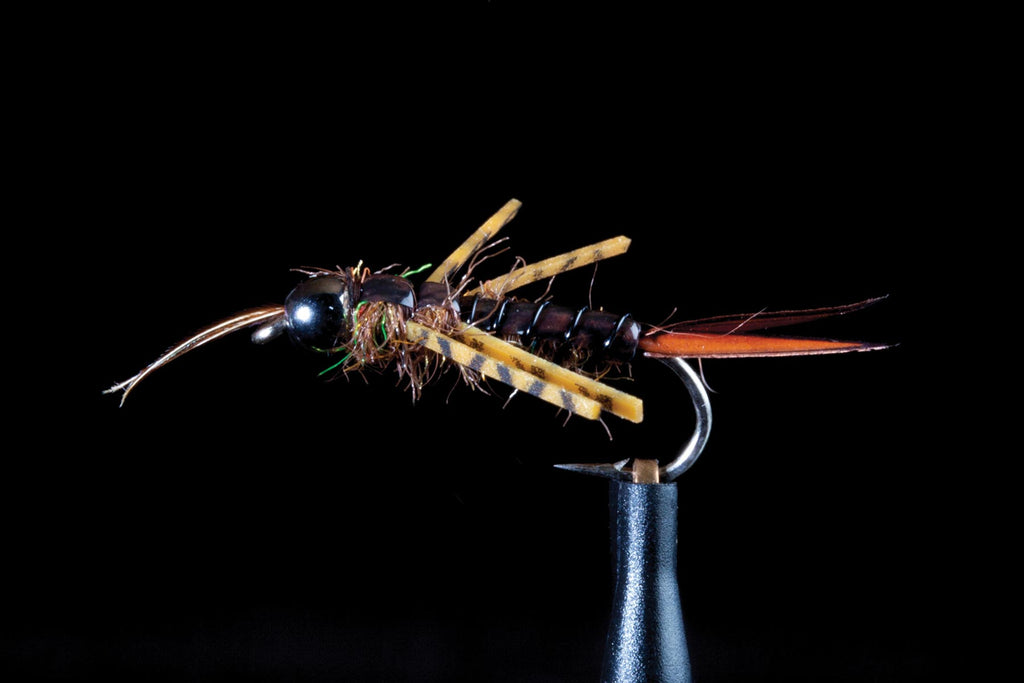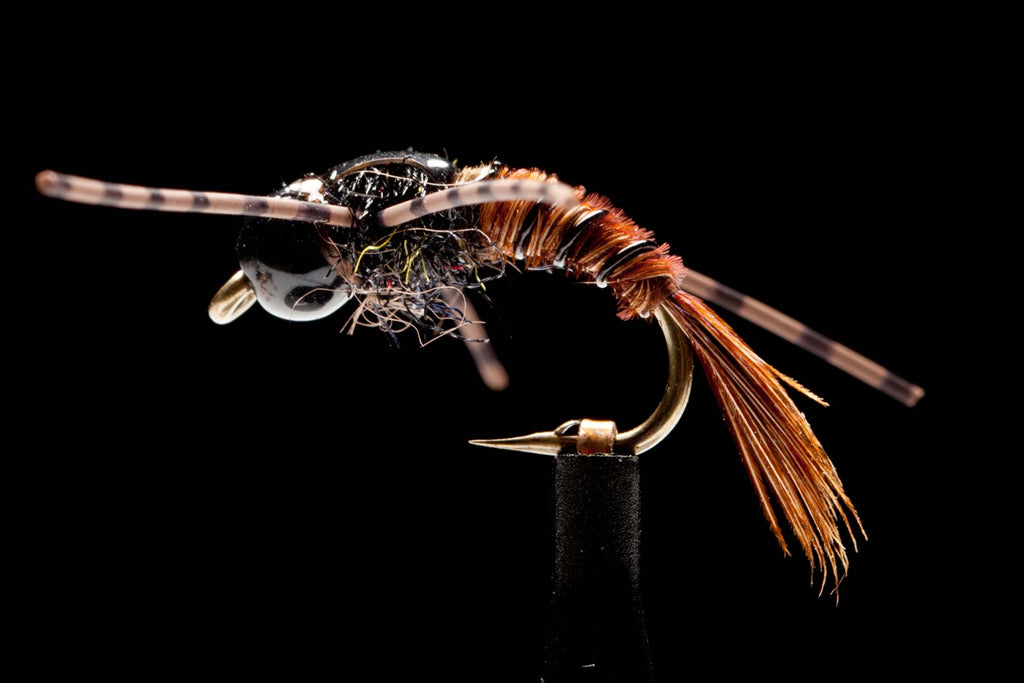Stoneflies | A Guide To Fly Patterns
STONEFLIES IN NEW ZEALAND
While many aquatic insects hibernate across the colder months, Stoneflies continue to feed and move about the stream bed, often becoming dislodged and victims of the drift. Stoneflies have a dependency on highly oxygenated water, thus a low tolerance of water pollution and so the presence of stoneflies in your local stream is an indicator of good water quality. Stoneflies can remain in their nymphal phase for up to four years, and so it’s a good bet that at any time of the year, stoneflies are present in the cool, clean water river you are fishing.

This said, they are obviously an important food source for winter time trout and being larger in size than many other winter time nymphs, offer an enticing meal to winter running fish. The representative size of stonefly imitations also mean a lot of weight can be packed on these larger hooks enabling you to get down deep, where you should be fishing in colder water conditions.
Out of many dozens found in NZ, the three predominant species are represented by green, brown, and smaller black stoneflies. In the Manic Fly Collection we have a number of well thought out stonefly representations to cater to many conditions and situations.
WHAT MAKES A GOOD STONEFLY PATTERN?
Stonefly flies allow you to really go to town on profile, accents and big, come eat me legs. A good stonefly imitation is my go to in deeper, rocky runs, or big pools where you need your fly to be seen. On many of my southern NZ rivers going too big, too soon can kill an opportunity, however for me personally after presentation, bling, then weight, I want a stonefly or two in my fly box.
Rubber legs on a stonefly nymph add enticing movement whereas stiff static legs push water and create an aquaplane effect, enhancing the visibility of your fly. Often something big, visible but lightweight is just the thing along the slack, knee deep edges and the addition of Loon’s Deep Soft Weight will get them plunging the depths if needed. Otherwise I reach straight for the tungsten, you choose.
And when the big streamers seem to be putting the fish down, try swinging a stonefly nymph, you might be pleasantly surprised.

STONEFLIES FROM THE MANIC FLY COLLECTION
SIMON'S UGLY
 Simon's Ugly - Green & Red
Simon's Ugly - Green & Red

Simon's Ugly - Hare & Copper
When you need to get deep, we have the Simons Uglies range offering both heavy density and fine rubber legs, antennae and tails to really get those deeper fish going. With several eye catching, and natural colour-ways, Uglies really let you play according to conditions and personal preferences.
SILLY STONE

Silly Stone - Brown

Silly Stone - Green
When profile and movement are a must we have the Silly Stone collection, and with their lighter weight, are perfect when fishing slower edges and softer pockets.
DAVIS' BACK COUNTRY STONEFLY

Davis' Back Country Stonefly - Green

Davis' Back Country Stonefly - Hare's Ear

Davis' Back Country Stonefly - Pheasant Tail

Davis' Back Country Stonefly - Black
Mike Davis’ legendary Davis’ Backcountry Stoneflies are the ultimate, compact dropper pattern on a curved hook for both aesthetics, and less leverage for backcountry monsters. The Davis’ Stonefly is one of my favourite general nymphs for big water dry / dropper rigs.
KYLE'S STONEFLY

Kyle's Stonefly - Brown

Kyle's Stonefly - Green
When the fish are a little more skittish, or when fishing in low, spooky conditions then the super realistic, trigger laden Kyles Stoneflies in both Green, and Brown are the no brainers.
LITTLE BLACK STONEFLY

Little Black Stonefly
Often overlooked and misunderstood are the Little Black Stone. I certainly know that on my home waters of Southland, Black Stone Flies make up a significant proportion of the trout’s diet, and chances are that many Pheasant Tails which are eaten on the Upper Mataura are in fact, accepted by trout as black stoneflies. Certainly worth keeping in the box.
A FINAL WORD
Stonefly nymphs are totally at home being fished by themselves, or as part of a team. As a bomb they can be fished on point to anchor down a euro style rig, or as the bomb in your truck and trailer style set up. They have the size and the presence to make fish move in the heaviest of water and can offer contrast, movement and bulk to get noticed in discoloured flows.
So save a few rows in that go-to fly box for a selection of stonefly patterns, they’re everywhere and they get eaten year round so they should have a permanent spot.
